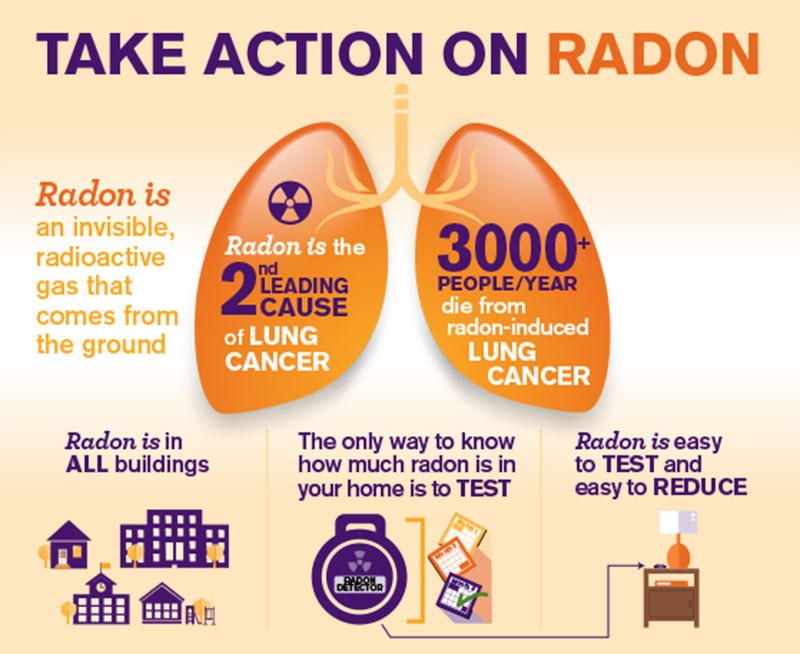Health Canada is reminding Manitobans that testing their homes to determine the radon levels could be the first step towards helping to reduce their lung cancer risk.
A byproduct of the natural breakdown of uranium, radon is a gas found in soil and rock that often makes its way into homes through sump pits or cracks in the foundation as it seeks a pathway from the ground to the atmosphere, says Health Canada regional radiation specialist Sandy Hutchison.
Homes, particularly in winter, provide the easiest pathway, he says, as warm air rising draws new air into the home from the bottom to replace it.
Manitoba is a radon-prone province, with an estimated 19 per cent of homes exceeding the guideline level, Health Canada says, even if levels in the province are not as high as those in northern Saskatchewan.
The first step towards reducing your exposure to radon – the leading cause of lung cancer among non-smokers and second leading cause overall behind tobacco, leading to the deaths of over 100 Manitobans each year – is to test the level in your home.
“We have a very simple, do-it-yourself style test,” says Hutchison.
Testing should be done in any area of the house where people send a lot of time breathing the air, and any number over 200 becquerels per metre indicates that residents should take steps to reduce the level.
“You want to go as low as possible,” Hutchison says. “There is no safe level with radon.”
Testing should be done for a three-month period, preferably in winter when homes are sealed up against the cold.
To find companies selling approved detectors, go to TakeActionOnRadon.ca.
if the level is high, reducing it can be as simple as simple as creating a small hole in the foundation connected to a pipe that leads outside to help it continuously draw radon from the ground into the air, a method known as depressurization.
‘That’s very effective at reducing the radon level to as low as possible, which is the goal," Hutchison says.
For more information on the health effects of radon, to to canada.ca/radon.




